|
|

|
Podcast
Yoga
Tantra
Yantras
Meditation Music
Guru
No part of this Site may be reproduced in any form, without explicit written permission.
|
P A D M A S A N A 
the Sanskrit term PADMA means "lotus", consequently the translation of PADMASANA is "The Lotus Pose". The asana was given this name because the way hands and feet are, while performing this asana resemble somehow to a lotus flower. Another name for it is KAMALASANA. Some Yogic treaties use both denominations alternatively. GENERAL GUIDELINES: This asana was chosen to represent the whole Yoghic system, owing to its numerous and profound effects. Just as the lotus is considered the sacred flower of India, the yogis are represented most of the times sitting in Padmasana. The traditional secret texts mention that the practitioner who can perform Shirshasana (the head-stand) for 30 minutes and Padmasana for a similar period of time, correctly, may consider himself/herself an advanced practitioner of the Hatha-Yogic system. Moreover, it is important that you keep in mind that there are many yogic techniques starting with Padmasana. This asana may be performed also for techniques of focus, breathing, and meditation. EXECUTION AND SUBTLE ENERGY EFFECTS: In order to practice hatha yoga you need to have experienced supervision; also, being part of a yoga practice group helps. Some asanas have medical counter indications - we urge you not to consider this site a guide to the practice of hatah yoga. We chose not to publish this information on the sivasakti.net website; you can find it in the yoga classes organized by our school. 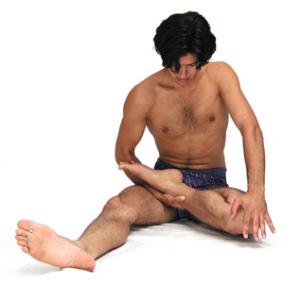
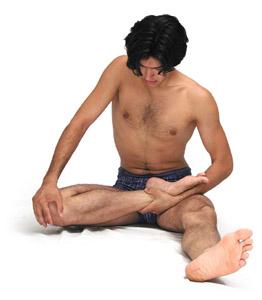

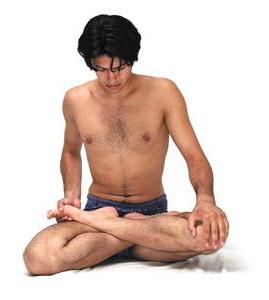

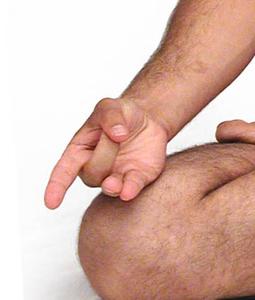
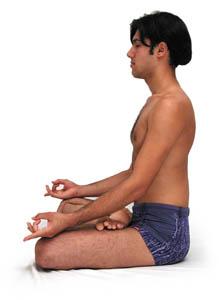

This asana is referred to as one of the most efficient in Hatha-Yoga. In the traditional texts, it is mentioned with SIDDHASANA (the Perfect Pose). In Hatha Yoga Pradipika, chapter 1, the great Yogi Swatmaratma says: "Place the right foot on the left thigh and the left foot on the right thigh, and grasp the toes with the hands crossed over the back. Press the chin against the chest and gaze on the tip of the nose. This is called the Padmasana, the destroyer of the diseases of the Yamis. Place the feet on the thighs, with the soles upward, and place the hands on the thighs, with the palms upwards. Gaze on the tip of the nose, keeping the tongue pressed against the root of the teeth of the upper jaw, and the chin against the chest, and raise the air up slowly, i.e, pull the apana-vayu gently upwards. This is called the Padmasana, the destroyer of all diseases. It is difficult of attainment by everybody, but can be learnt by intelligent people in this world. Having kept both hands together in the lap, performing the Padmasana firmly, keeping the chin fixed to the chest and contemplating on Him in the mind, by drawing the apana-vayu up (performing Mula Bandha) and pushing down the air after inhaling it, joining thus the prana and apana in the navel, one gets the highest intelligence by awakening the sakti (kundalini) thus. (N.B-- When Apana Vayu is drawn gently up and after filling the lungs with the air from outside, the prana is forced down by and by so as to join both of them in the navel, they both enter then the Kundalini and, reaching the Brahma randra (the great hole), they make the mind calm. Then the mind can contemplate on the nature of the atmana and can enjoy the highest bliss.) The Yogi who, sitting with Padmasana, can control breathing, there is no doubt, is free from bondage." This asana is indicated for the awakening and development of latent physic, psychic, mental and spiritual forces. During the practice of this asana, the practitioner obtains easily a state of profound meditation, contemplation, worship or prayer. Its persevering practice leads to the revelation of the Supreme Self, Atman, and it makes possible a beatific state of communion/fusion with the Divine (SAMADHI). While performing Padmasana, the trunk, head, hands and feet form the shape of a pyramid, and this is one of the causes of this asana's amazing effects. Some yogis consider that when a person is capable of practising it for 15 minutes, without pause, he/she may approach the Pranayama techniques. Padmasana cures constipation, indigestion and flatulence. It cures the pains in the joints, especially the ankles and knees, and it tones the thighs. The position of the feet determines the rhythm of the blood flow, which will be, consequently reduced in the feet and more intense in the pelvic area and abdomen. The heart will push the arterial blood meant for the feet through the abdominal aorta, and the organs situated in the lower side of the abdomen (the genitalia, kidneys, colon, etc.) will benefit because of this supplementary flow of arterial blood. These organs are thus tones and regenerated. This asana is highly useful for the women, as it tones the uterus. It leads to a better digestion, if practised daily. It also facilitates a very good control over the sexual potential energy. Those who wish to be successful in the practice of Padmasana must be patient and assiduous. One must never force when practising Padmasana. If you force, you may break the ligaments from the knees, ankles, or you may even have a menisc fracture. IMPORTANT NOTE: Before practising this asana, ALWAYS begin with preparatory exercises! PREPARATORY EXERCISES The most effective preparatory exercise is: Sit on the floor, feet stretched in front. Bend your left foot. Place the outer side of the left ankle on the palm of the right hand. The wrist supports firmly the heel. Now place the left hand on the inner side of the left knee. Now press slightly the left knee, in a balancing movement, while the right hand lifts the left ankle in order to place it on the right thigh. This balancing movement will go on for 2-3 minutes and it will always stop at the slightest sign of pain. The exercise will be then realised with the other foot. If one joint is more rigid than the other, insist on it. This exercise acts simultaneously on the coxo-femoral joint, the ankle and the knee joints, making them more flexible. Another efficient technique for obtaining a better flexibility of the feet is Bhadrasana, the Throne Pose. |